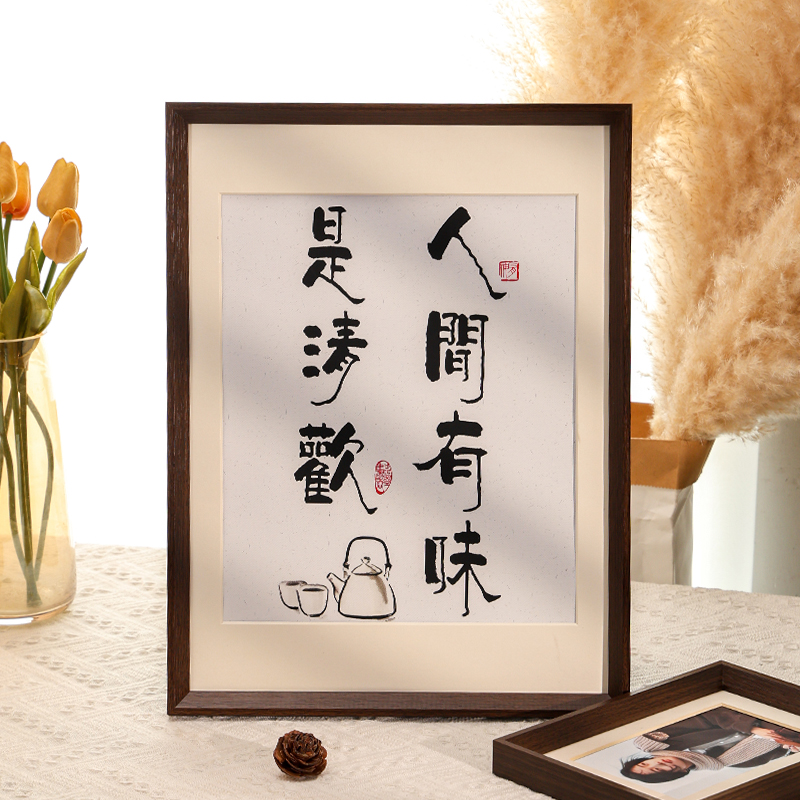When it comes to eco-friendly photo frames, there are a variety of sustainable options that not only look great but also reduce your environmental footprint. By choosing materials that are recycled, upcycled, or responsibly sourced, you can create beautiful and sustainable decor for your home. Here’s a guide to some eco-friendly photo frame options and how they can make a difference in your space:
1. Recycled Wood Frames
Wood is a classic choice for photo frames, but traditional wood framing can contribute to deforestation. Recycled wood frames, however, offer a more sustainable alternative.
- What to Look For: Frames made from reclaimed wood or salvaged materials, such as old furniture, fences, or pallets.
- Benefits: Recycled wood prevents the need for new trees to be cut down. It also gives the wood a unique character, often with weathered, rustic appeal.
- Styling Tip: These frames tend to have a natural, organic feel, so they pair well with rustic, bohemian, or country-style home decor.
2. Bamboo Frames
Bamboo is one of the most sustainable materials on the planet. It grows quickly, requires little water, and doesn’t need harmful pesticides.
- What to Look For: Bamboo frames that are FSC-certified (Forest Stewardship Council) ensure that the bamboo is sustainably sourced.
- Benefits: Bamboo is lightweight, durable, and biodegradable. It’s also highly renewable, making it an excellent choice for eco-friendly frames.
- Styling Tip: Bamboo frames can add a minimalist, modern touch to your decor while being versatile enough for any room.
3. Recycled Metal Frames
Recycled metal frames are often made from materials like aluminum, steel, or iron that have been repurposed, reducing the need for mining and new production.
- What to Look For: Look for frames made from 100% recycled metal or those that use a high percentage of recycled content.
- Benefits: Metal frames are durable and long-lasting, making them an excellent investment. Recycled metal also tends to have a polished, industrial look.
- Styling Tip: Choose metal frames in matte black, brushed nickel, or copper for a contemporary or industrial aesthetic.
4. Recycled Plastic Frames
Plastic is notorious for its environmental impact, but recycled plastic frames provide a sustainable option by repurposing old plastic into new products.
- What to Look For: Frames made from 100% recycled plastic or plastic sourced from post-consumer waste.
- Benefits: By using recycled plastic, you help reduce the amount of plastic waste in landfills and oceans. Many recycled plastic frames are also lightweight and durable.
- Styling Tip: Recycled plastic frames often have a modern, sleek design, so they’re perfect for contemporary, minimalist, or even coastal-themed interiors.
5. Upcycled Material Frames
Upcycling involves repurposing old or discarded items into something new. This is a great way to create unique, eco-friendly photo frames that are both creative and sustainable.
- What to Look For: Frames made from upcycled materials such as old magazines, newspapers, wine corks, or vintage materials like glass and fabric.
- Benefits: Upcycled frames are often one-of-a-kind, offering a personal touch and helping to reduce waste.
- Styling Tip: These frames tend to be quirky and artistic, so they’re ideal for eclectic or boho-style spaces.
6. Cork Frames
Cork is a renewable, biodegradable material that comes from the bark of cork oak trees. It’s an eco-friendly option that can add a natural touch to your photos.
- What to Look For: Cork frames made from sustainably harvested cork or recycled cork materials.
- Benefits: Cork is lightweight, durable, and has a soft, natural texture. It’s also fully biodegradable, making it a good choice for environmentally conscious consumers.
- Styling Tip: Cork frames work great in organic, earthy, or Scandinavian-inspired interiors.
7. Glass Frames with Recycled Glass
Glass frames are often made with new glass, but choosing frames with recycled glass is a great way to reduce the environmental impact.
- What to Look For: Frames made from 100% recycled glass or those with a significant percentage of recycled content.
- Benefits: Recycled glass helps conserve resources and energy. Plus, glass frames are durable, easy to clean, and have a sleek, modern aesthetic.
- Styling Tip: Glass frames are perfect for modern, minimalist, or gallery-style interiors.
8. Fabric or Textile Frames
Eco-friendly fabric or textile frames are made from organic materials such as cotton, hemp, or recycled fabrics. They offer a unique texture and a cozy feel to your photos.
- What to Look For: Frames made from organic cotton, hemp, or upcycled fabric materials.
- Benefits: These frames are lightweight, durable, and biodegradable, making them a sustainable option for any eco-conscious home.
- Styling Tip: Textile frames work well in relaxed, bohemian, or rustic interiors. Look for frames with intricate patterns for a touch of personality.
9. DIY Eco-Friendly Frames
If you’re feeling crafty, you can create your own eco-friendly photo frames using materials you already have around the house.
- What to Look For: Old cardboard, fabric scraps, wooden sticks, or vintage materials you no longer use.
- Benefits: Making your own frames is a fun, creative way to personalize your decor while reducing waste.
- Styling Tip: DIY frames can be customized to match your home’s color scheme and style, making them perfect for eclectic, farmhouse, or personal spaces.
Additional Tips for Sustainable Framing:
- Buy Local: Look for artisans or local makers who create sustainable frames, as buying locally reduces transportation emissions and supports small businesses.
- Opt for Vintage: Thrift stores and antique shops often have old frames that you can repurpose or restore. This is a great way to find unique, sustainable frames.
- Choose Sustainable Packaging: When purchasing eco-friendly frames, consider the packaging as well. Look for companies that use recycled or minimal packaging materials.
By choosing eco-friendly photo frames, you’re making a positive impact on the planet without sacrificing style. Whether you’re looking for natural materials like wood or bamboo, repurposed items, or recycled content, there are sustainable options to suit every taste and room in your home.








